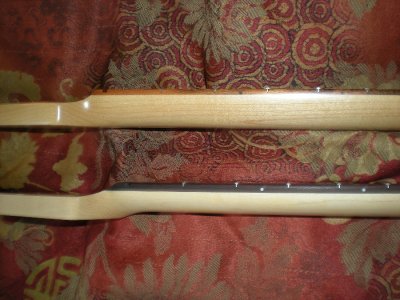Not sure what you're asking, but when it comes to weight by species, some woods have a pretty wide range while others are more predictable. For example, if we pretend a Strat body takes a cubic foot of wood to make (it doesn't, but for comparison's sake...), then an Alder body could weigh anywhere between 26 and 42 pounds, which is quite a wide range, while a red Oak body would be very predictably 45 pounds. Same applies to necks, of course, albeit with different species. (
density chart)
Heavy necks aren't necessarily a Bad Thing. For one, necks are generally a much smaller fraction of the whole, so even with a lotta fluctuation, the overall percentage is still smaller overall. Second, body style has a lot to do with the "comfort" or "playability" effect. With a Strat body, the forward strap hanger is so far forward of the center of gravity that even if the neck weighed as much as the body, it probably still wouldn't neck dive. Other styles, like an "SG", have their forward hangers placed too close to the COG, so the neck has an outsized influence due to leverage. Even with an unusually light neck, that design is on the hairy edge of imbalance right away.
Most guitars are designed to hang nice and are dramatically rearward-biased weight-wise, so the reason I usually mention neck weight has more to do with overall weight than any imbalance issue. Hanging a 6 or 7 pound guitar off your shoulder vs. one at 8 or 9 pounds doesn't sound like much, but it's surprising how quickly a pound or two will make you wish you'd taken up keyboards whose weight is borne by the floor instead of your shoulder.



